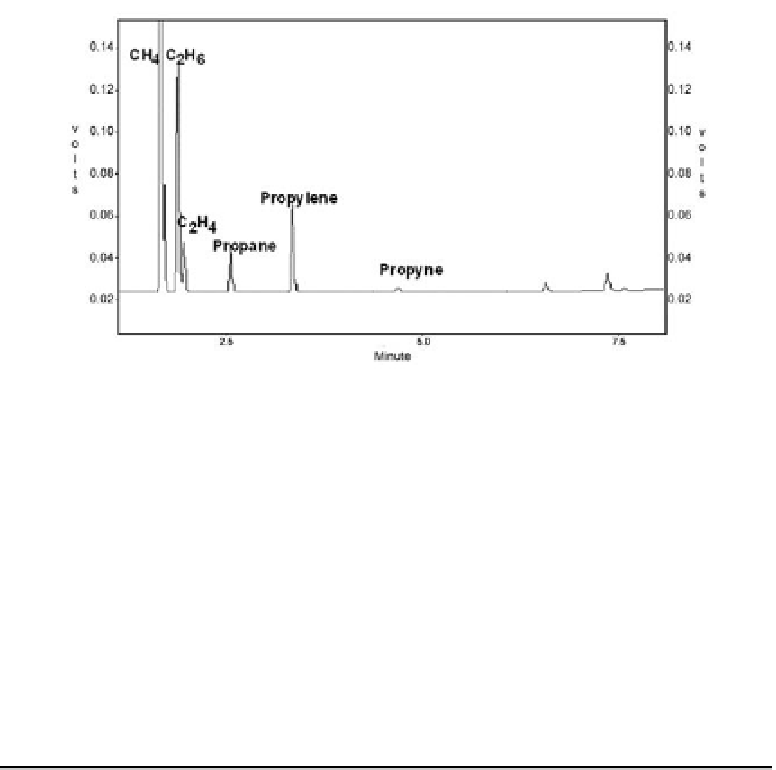Environmental Engineering Reference
In-Depth Information
methane concentration was not unexpected although it is difficult to explain by
Fischer-Tropsch synthesis. Hardy and Gillham (1996) also reported a high methane
concentration in the study of the formation of hydrocarbons by ZVI. It has been noted
that the weight fraction of methane is always higher than predicted by an ideal ASF
distribution in Fischer-Tropsch synthesis. No apparent consensus in the literature to
explain this result was found (Puskas, et al., 1993).
Figure 7.9
Formation of hydrocarbons during the transformation of carbon tetrachloride
by bimetallic Pd/Fe nanoparticles (t = 96 hours).
Table 7.4
Formation of hydrocarbons in transformation of carbon tetrachloride by
bimetallic Pd/Fe nanoparticles.
Carbon
Number (n)
Concentration
(mg/L)
Weight
Fraction (
w
n
)
Compounds
log (
w
n
/n)
1
CH
4
8.0
0.93
-0.032
2
C
2
H
6
0.45
0.055
-1.56
C
2
H
4
0.0224
3
C
3
H
8
0.059
0.0166
-2.26
C
3
H
6
0.084
C
3
H
4
< 0.01
4
n-C
4
H
10
0.034
0.004
-3.0
Total Mass
8.64
1.00
In summary, the formation of methane and long-chain hydrocarbons in the
transformation of carbon tetrachloride by bimetallic Pd/Fe nanoparticles has been
observed. The production of hydrocarbons is generally in agreement with the ASF
distributions. This provides a solid support that the metal-mediated dechlorination
reaction is a heterogeneous process allowing the reaction to proceed onto the metal
surface.



Search WWH ::

Custom Search